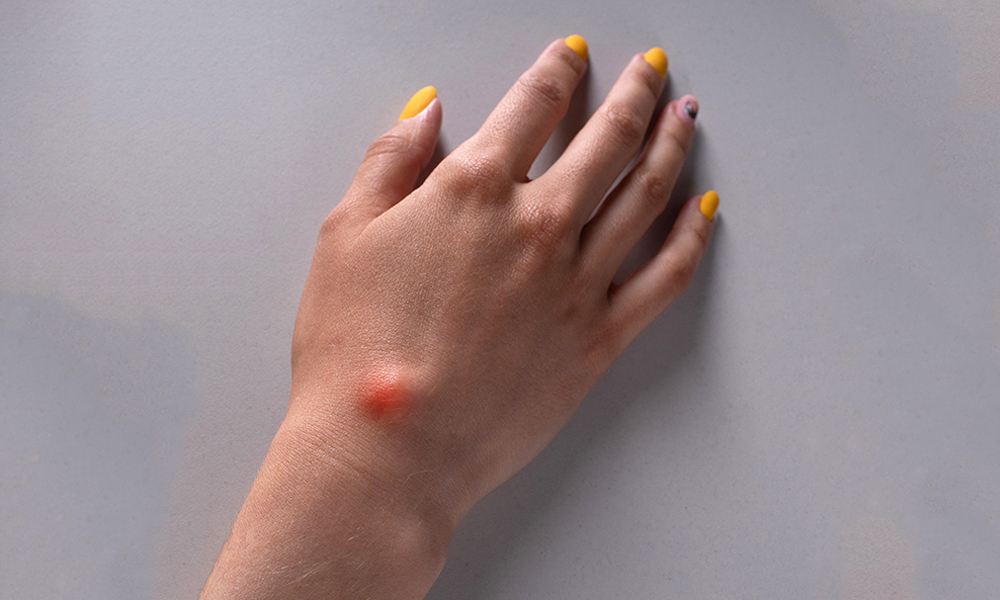-
 Toll Free No 9146-744-744
Toll Free No 9146-744-744 - Appointment

The doctor inquires about the patient history and symptoms of the disease. A clinical examination like a ‘slippage sign’ is conducted to evaluate the Lipomas on your body.
When Lipomas become painful or abnormally large following tests are recommended by a general surgeon:
|
LIPOMA |
GANGLION CYSTS |
|
Soft to touch |
Soft bump of mass that changes the size but doesn’t move |
|
Felt under the skin |
It may grow; go away or even come back |
|
Colourless lump |
Swelling in affected area |
STEROID INJECTIONS – The doctor gives steroid injections at the site of the lipoma directly that helps shrink the lipoma but cannot cure or remove it.
Surgery proves to be an effective treatment for lipoma. During the procedure, the doctor makes a small excision and uses the liposuction method to extract the fatty tissues. It is a minimally invasive procedure that leaves no scar on the body and reduces the chances of lipoma reoccurrence.
Immobilization – Activity can cause the ganglion cyst to get large, thus temporarily immobilizing the area with a brace or splint helps. As the cyst shrinks, it may release the pressure on the nerve relieving the pain.
Aspiration - A needle is used to drain out the fluid from the cyst but the cyst may recur over time.
Surgery to remove ganglion cysts is called ganglionectomy which is an outpatient procedure. Complete recovery takes two to six weeks. When remove surgically, it reduces the risk of a cyst coming back.
LIPOMA |
GANGLION CYSTS |
|
Heredity |
Osteoarthritis |
|
Obesity |
Inflammation in the tendons or joints |
|
Liver diseases |
Injury to wrists or finger joint |
|
High cholesterol |
Repetitive wrists and fingers activities |


The most effective way to stop lipoma from growing is to remove it through surgery. It is the common approach for large and painful growing Lipomas. Surgery also reduces the chances of lipoma reoccurrences.
Lipomas are non-cancerous tumors that develop due to the overgrowth of fat cells. These fatty tissues do not turn into cancer. Proper diagnosis and treatment are a must for Lipomas.
In some cases Lipomas may disappear but, normally, you will either need medical or surgical treatment for it.
Those who have Osteoarthritis, joint, and tendon injury are at higher risk of developing ganglion cysts.
Usually, a lump or a bump on your wrist, finger, or foot is called a ganglion cyst. The cyst sits below the skin surface and may look like a bubble.
Ganglion cysts are not dangerous. They are benign masses that will not spread to other areas and are not cancerous.
Immobilization, as this may enhance the development of ganglion getting larger. A doctor can temporarily immobilize the area with a brace or a splint.
Aspiration – The doctor uses a needle to drain out the fluid from the cysts
Lipomas are usually a bit deeper in the skin, soft and squeezy, and feel like they can be moved slightly under the skin.
Ganglion cysts feel like rubber under the skin, and they often have drainage holes discharging white thick material from them.
Insurance usually covers cysts removal surgeries. Since cysts removal is a medical procedure, and non-cosmetic, the surgeries are covered under health insurance. For further assistance contact HospiOne Team.
OUR PROCESS IS EASY contact us for More information.
Copyright © 2023 hospione.com - All Rights Reserved | Developed by Digital Marketing StudioGenix LLP